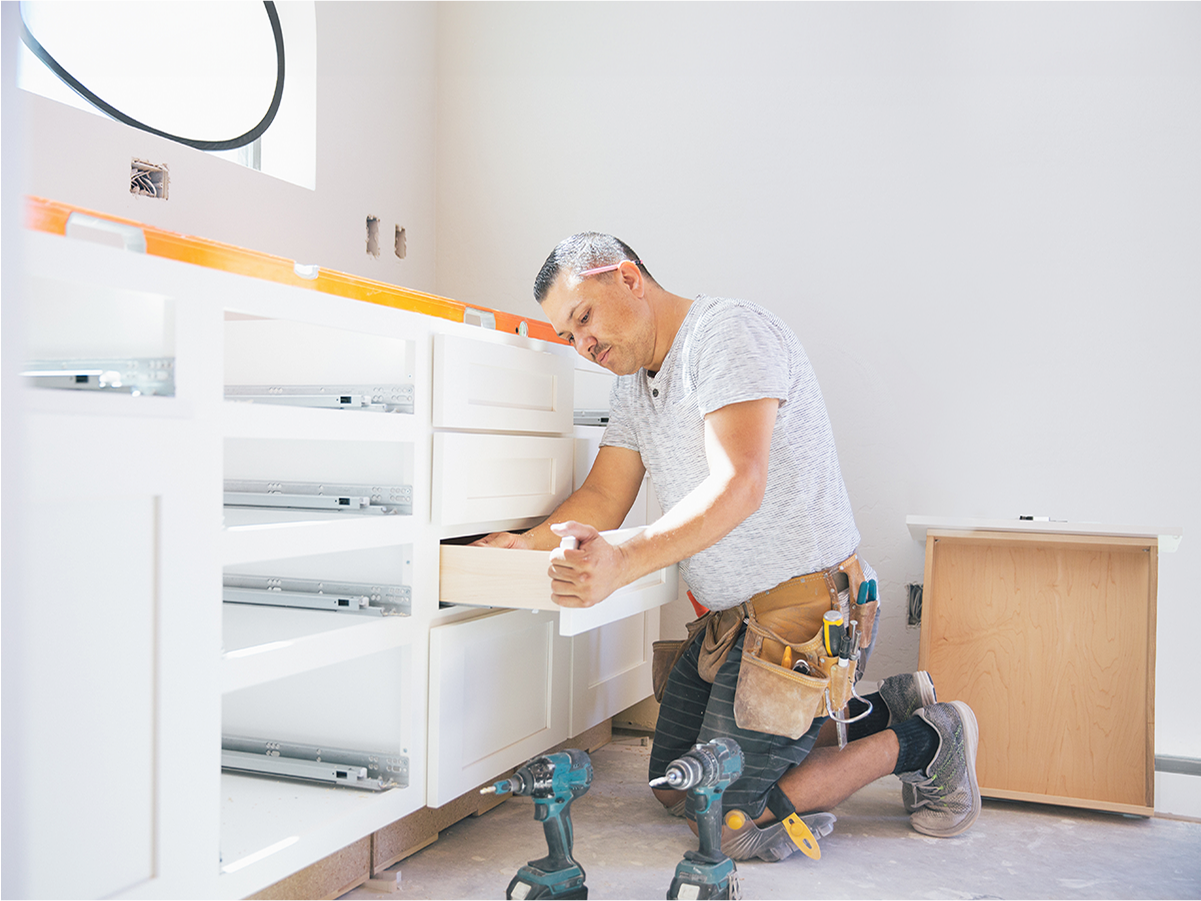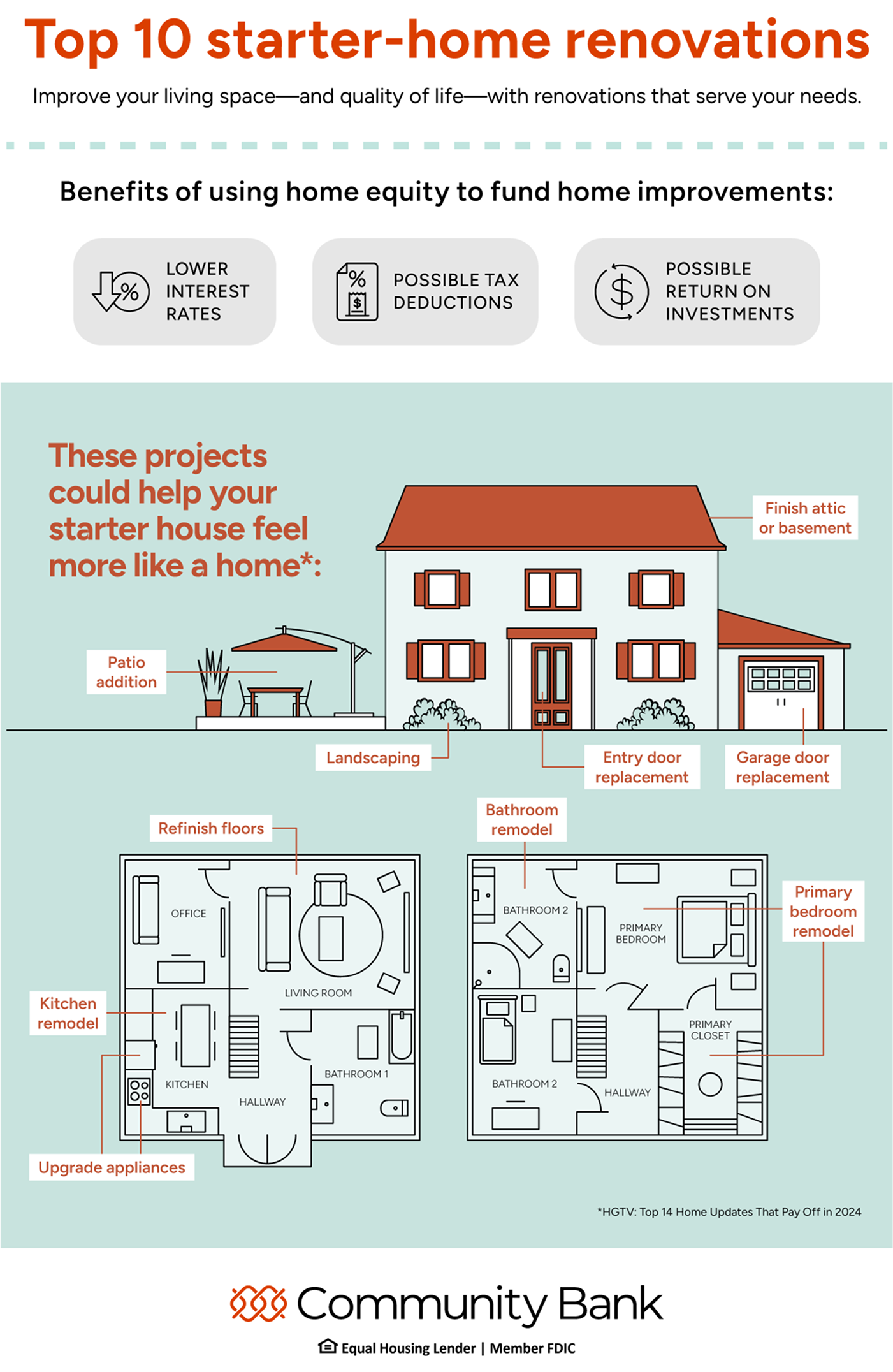
Published April 1, 2025
Feel stuck in your starter home? Here are 10 ways to upgrade your space.
If you bought your home when interest rates were lower than they are now, chances are you’re not interested in selling. Staying in your home could be the financially savvy choice, even if you originally purchased it as a starter home that didn’t check off every item on your wish list.
There are affordable ways to improve your living space and quality of life. Renovations of any size can help transform your home to better serve your needs.
One of the best ways to fund home improvement projects is by tapping into the equity you’ve built in your home. Doing so could give you:
- Lower interest rates than credit cards or personal loans
- Tax deductions on funds used to purchase, repair, or make significant improvements to the home securing the loan, but check with your tax professional first
- Possible return on investment when you do sell the home
Just remember that when you borrow from the value of your home, you use that home as collateral. That’s why it’s so important to know your budget and what you can manage. Our article on how to calculate your home equity can show you how much equity you may have to tap into, so you know where to start with your financial plan.
Renovate with a home equity loan.
Many people think home equity loans should only be used for major renovations, but you can use them for smaller projects, too.
Even minor upgrades with a budget around $10,000 can make your home feel more your own. Even better, they add value and functionality to your home.
Regardless of the size of your budget, you’ll want to use a home equity loan for one relatively short-term job, not many small ones over time. For example: a new garage door. Likewise, home equity loans work well when that job has a set cost and timeline, or requires a lump sum up front.
Make incremental updates with a line of credit.
A home equity line of credit (HELOC) is better for renovations with ongoing updates and costs, or projects where the cost is uncertain. For example, a major addition or a full kitchen remodel.
The nice part about a HELOC? If you don’t end up needing your total credit limit, you’re not required to spend it all. Plus, you only pay interest on the amount you’ve withdrawn.
Just remember, most HELOC rates aren’t fixed. That means they could fluctuate to be more or less than when you signed off. If stability is your priority, a loan may be a better option.

These projects could help your starter house feel more like a home*:
- Upgrade appliances
- Finish attic or basement
- Refinish floors
- Bathroom remodel
- Kitchen remodel
- Primary bedroom remodel
- Patio addition
- Landscaping
- Garage door replacement
- Entry door replacement
Whether you’re expanding your world inside or out of your home, our experienced professionals at Community Bank can help steer you toward success with a variety of home equity products that can be built around your situation. Book an appointment with us to get started.
If you’ve considered these options, but moving to a new house still sounds like a better fit for your situation, you can find more helpful resources at our Homebuying Hub. Staying in a starter isn’t for everyone, and we’re here to help you find your forever home.
Explore our Financial Literacy Hub and our blog for content that helps you make money decisions confidently.


